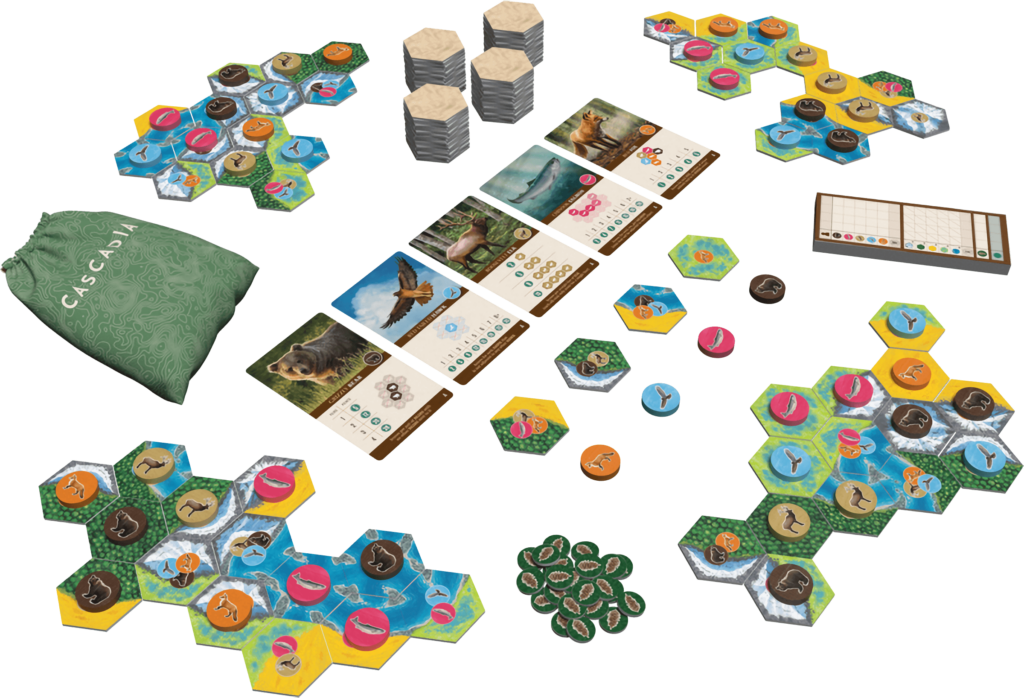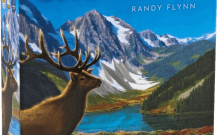A little neglected, tile placement games are back in force with our two board games of the week, Akropolis and Cascadia.
When we talk about tile placement games, we obviously immediately think of the timeless Carcassonne, the most famous of all. But titles based on this mechanic, in which you build a landscape by gluing tiles to each other, have become rather rare lately. Two games, released recently, and whose success proves that the mechanics are still very popular, could well put it back in the spotlight.
Akropolis and Cascadia, since it is about them, different however somewhat from their illustrious predecessor. Where, in the latter, we build a common game area from the tiles drawn, here it is the opposite: we have a common pool of tiles, in which we use, to each build his own landscape. .
Akropolis
In Akropolis, each player builds his Greek city, by assembling tiles made up of three hexagonal spaces, representing districts. These tiles are purchased from a common lot, renewed at the start of each turn. The first tile in the set is free, the next costs one stone, the next two stones, and so on.
The placement rule is very simple: a new tile must be adjacent on at least one side to your city, or rest on two other tiles. This is also how you get new stones to spend later, covering quarries.
There are five colors of districts, five types: blue dwellings, yellow merchants, purple temples, etc. Their placement is free, but they only earn points if a very specific condition is met. For example, barracks must be on the outskirts of your city, merchants must be isolated, temples on the contrary must be surrounded on all six sides, etc. And the higher a district is, the more points it is worth.
Finally, some tiles feature squares. They are the same color as the quarters, but do not count as such. Instead, they represent between one and three stars, which are all end-game point multipliers.
This occurs when all the tiles have been placed. We then score points for each of the five colors, by multiplying the number of stars of our places by the value of the corresponding districts. You have five isolated merchant districts (yellow) and four yellow stars: you score twenty points for yellow. Finally, as often, the highest score wins.

Akropolis astonishes by the simplicity and the immediacy of its rules, and the fluidity of its tricks: I take a tile, I place it, on the next one! Anyone can play it. Especially since the way to score points in each district is easy to understand, and the whole remains perfectly legible, even when your city expands. Despite this, it offers a nice learning curve, and the short duration of the games (about thirty minutes at most) means that we generally align several of them.
Its only flaw comes from the lack of interaction between players. If two can annoy his opponent by taking the tiles he covets, the more we tend to play each in his corner, specializing in his colors.
Akropolis is a superb family game, simple, accessible, fluid, but still enjoying great depth (given the length of the games). We understand the immediate success it enjoys. To simplify, we could compare it to a meeting between the excellent Taluva (for tile overlay) and Quadropolis (for the different ways to score points)… a beautiful pedigree!
- Akropolis is a game by Jules Messaud
- Illustrated by Pauline Détraz
- Published by Gigamic
- For 2 to 4 players from 8 years old
- For games of about 25 minutes
- Priced at €26.90 at Philibert
The verdict

We liked
- Very simple rules
- Smooth and fast games
- A beautiful depth over a short duration
We liked less
- Lack of interaction between players (a little less true with two players)
Cascadia
The Cascadia is a region bordering the Pacific coast, straddling the United States and Canada. In Cascadiathe eponymous game, you try to create the most harmonious ecosystem, by judiciously mixing the fauna with its environment.
A game turn simply consists of choosing a hexagonal landscape tile among four available in the center of the table, drawn randomly. It can be a mountain, a forest, a meadow, a swamp or a river. Some tiles show two landscapes (half forest, half river, for example). Then it is added to its ecosystem, the only constraint being that the new tile must touch another by at least one side.

But that’s not all, because each landscape tile is associated with an animal piece (bear, elk, salmon, buzzard or fox). After adding the selected tile to its ecosystem, place the associated animal, either on the new tile, or on a previously placed tile. Provided you have a suitable habitat for the animal in question. Otherwise, we lose it.
And, for what purpose? Score points. Each type of animal has a specific condition for earning victory points. They are defined at the start of the game, through a card drawn at random for each animal, among four possible. Bears should be in pairs, e.g. single buzzards, salmon in unbroken line, etc. Points are also scored for the largest set of contiguous tiles of each type of landscape, and a majority bonus is granted to the players concerned.
The game ends after exactly twenty rounds, when all tiles are laid, and the highest score wins, as usual.

Here is nothing less than the winner of the Spiel des Jahres 2022, the most coveted gaming title in the world. Let’s be honest, even though we really enjoyed all our games, we expected something a little more original on the first place of the podium.
It prevents that Cascadia is a very successful and particularly pleasant game to play. Its rules are simple, its rounds fast and fluid, and the different ways to score points require a welcome dose of strategy. You can’t just play in your own corner, you have to observe what others are doing, to juggle between the landscapes and the animals that interest them, and those that don’t interest them, but which interest us, and which have therefore more likely to be present in our next round.
The different possibilities of counting animal points, with increasing difficulty, allow both to ensure the renewal of the games, but also to the game to progress at the same time as the experience of the players.
Cascadia is a calm, relaxing game, two aspects further reinforced by the theme. It smells of nostalgia for slightly older titles, with games neither too short nor too long, with precisely balanced interaction, with quality material, but without unnecessary abundance, and with accessible rules, but offering many possibilities. So certainly, it is not the most original game in the world, but it fills this weakness with a formidable efficiency.
- Cascadia is a game by Randy Flynn
- Illustrated by Beth Sobel
- Published by Lucky Duck Games
- For 1 to 4 players from 10 years old
- For games of about 30 to 45 minutes
- Priced at €31.50 at Philibert
The verdict

We liked
- Simple rules
- Quick spins
- Guaranteed renewal thanks to the different ways of scoring points
- A calm and relaxing game and theme
We liked less
- Not very original… so what?
Some links in this article are affiliate. We’ll explaine everything here.
